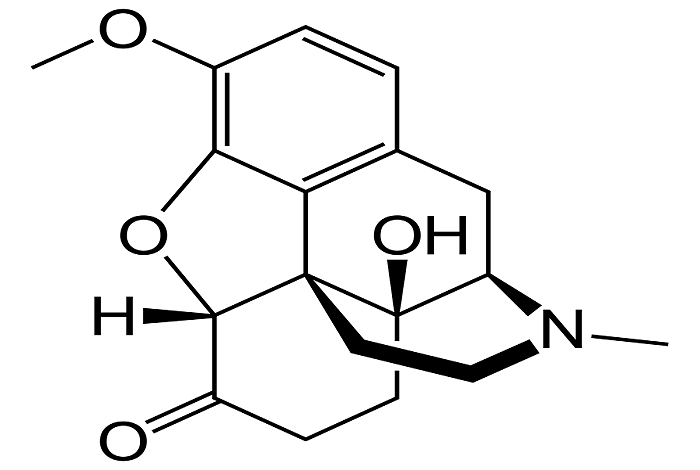What is the Mechanism of Action of Oxycodone?

If you are taking Oxycodone, you might wonder about its action mechanism. This article will describe the molecule’s molecular structure, Agonist activity at mu-, delta-, and kappa-opioid receptors, the possible side effects, and the risks associated with addiction.
Other Info: Fildena 100
Molecular structure
Oxycodone is an opioid used for the treatment of moderate to severe pain. It is a semisynthetic opioid derived from thebaine. The molecular structure of Oxycodone includes two planar rings and four chiral centers.
Oxycodone has several pharmacologically active metabolites. Two primary oxidative metabolites include Oxycodone and noroxymorphone. These metabolites may be necessary for Oxycodone’s metabolism.
Oxycodone has pharmacokinetic properties, such as a relatively low half-life and clearance rate. However, its half-life and clearance rates vary according to gender. Females have lower serum oxycodone concentrations, while males have higher concentrations.
Oxycodone has many unknown pharmacological effects. Among the most prominent are its antioxidant properties, which are relatively potent. Another notable feature is its bioavailability. Oxycodone is more bioavailable than morphine but has a reduced binding affinity for the mu-opioid receptor.
Several studies have investigated the relationship between Oxycodone’s pharmacokinetics and pharmacodynamics. For example, a controlled-release oxycodone formulation was studied in patients with postoperative pain. Also, Oxycodone was administered to neonates and had similar oxycodone concentrations to maternal levels.
The oxycodone-induced metabolite-mapping study revealed that the opioid receptor-binding properties of Oxycodone are related to its metabolism. CYP2D6 is the main enzyme involved in Oxycodone’s metabolizing activity. As such, a genetic variant of this enzyme is known to modulate Oxycodone’s pharmacological properties.
Oxycodone’s molecular structure is somewhat similar to that of heroin. Although Oxycodone’s pharmacological characteristics are largely unknown, it has been observed that Oxycodone is highly addictive. Moreover, Oxycodone is not recommended for the treatment of some painful conditions. Therefore, attorneys must be able to understand the chemical and biological properties of Oxycodone to defend a client who has suffered an adverse pill reaction.
Agonist activity
The NOP receptor is a Class A G-protein coupled receptor (GPCR). It is found in all nervous tissues and involves various functions, including nociceptive transmission. Opioid agonists bind to the receptor and trigger two main transducing pathways. They activate a G-protein-mediated signaling cascade that leads to analgesic effects. These effects are different depending on which opioid subtype is started.
The NOP receptor has several intracellular coupling mechanisms, including arrestin, which is essential for its internalization. This process is associated with the development of analgesic tolerance.
However, studies have shown that agonists only sometimes desensitize the NOP receptor. This is known as biased agonism. Biased agonism is a term that has been used to describe the ability of opioids to trigger distinct downstream pathways, but it is not yet understood how they work.
One of the most exciting findings related to biased agonism is that it can separate analgesia and convulsions. In general, the bias of a ligand will depend on its chemical structure. But it is also necessary to study its pharmacological effects.
For example, the biased agonist SNC80 leads to a tolerance for analgesia and hyper locomotion. While morphine is a highly potent analgesic, it has a relatively low ED50.
Studies have shown that b-arrestin two is involved in the internalization of the NOP receptor. When a ligand is phosphorylated at Thr362/Ser363, the peptide is more potent in stimulating the b-arrestin receptor. Interestingly, b-arrestin-dependent ERK activation plays a role in preventing the DOR from becoming desensitized.
However, there is evidence that b-arrestin 2 is not directly responsible for opioid withdrawal. Activation of b-arrestin-dependent erk can lead to a partial opioid agonist, which looks like a full agonist in highly amplified systems.
Addiction risk
Oxycodone is a narcotic painkiller used to treat moderate to severe pain. It is considered to be an addictive pill. Addiction is a chronic condition that can cause serious health problems. The best way to prevent oxycodone addiction is through oxycodone rehab.
Oxycodone is an opioid painkiller that can have dangerous side effects. It can affect your respiratory system and cause breathing problems. It can slow your heart rate, leading to life-threatening medical conditions.
Talk to your healthcare provider if you are concerned about your addiction risk. They can explain the warning signs of opioid use disorders and recommend a treatment center.
Oxycodone abuse starts when someone takes the pill in larger doses than prescribed. It may lead to overdose. You may also experience withdrawal symptoms if you stop taking the medication.
Oxycodone with alcohol and certain medications can increase your risk of severe health problems. In addition to causing sleepiness, alcohol can also slow your breathing.
Oxycodone can change the chemistry of your brain. As a result, your body becomes more sensitive to its effects. That’s why a regular dose is not enough. When you reach a higher amount, your tolerance increases, and you start to experience withdrawal symptoms.
People with a history of substance abuse, those under the influence of other pills, and those who are inexperienced with opioids have higher addiction risks. They also have a more challenging time avoiding overdose.
Oxycodone can be fatal. It is essential to store the medication at room temperature and to keep it away from children. Some people misuse it by crushing it or injecting it to get a higher high.
Opioids are not meant for long-term pain. The risk of oxycodone overdose is increased by taking too much and mixing it with other pills.
Sedation or coma
When taking Oxycodone, some people might experience sedation or coma. If this occurs, it may indicate an overdose or pill withdrawal. It can also be caused by using it with other sedatives or other psychotropic pills. The most important thing is only to take the prescribed medicines.
The risk of sedation or coma may be greater if a person has pre-existing respiratory or cardiovascular problems. It is essential to consult with your physician about these concerns. Your doctor should be able to explain how to withdraw Oxycodone from your system.
Another common cause of sedation is when a patient is on a morphine drip. When the pill concentration is too high, it can cause a patient to enter a stupor. This condition can occur when the patient has a damaged liver or kidney.
Other medications that can cause sedation or coma are alcohol, other opioids, and certain sedatives. Using a combination of these medications can lead to a severe overdose. Also, when a patient stops taking these pills abruptly, they can cause pill withdrawal syndrome.
One of the most important concerns with opioids is their ability to cause respiratory depression. If a patient becomes depressed, they could develop pulmonary edema and ultimately die. Analgesic medications should be part of a comprehensive treatment plan for chronic non-malignant pain.
Another concern about opioids is their ability to increase the risk of sleep apnea. Sleep apnea is an abnormal pattern of breathing that can happen to people with pre-existing conditions. Opioids can also lead to memory problems.
Finally, Oxycodone should not be given to patients with severe renal or hepatic impairment. It is also advised not to use Oxycodone in conjunction with other benzodiazepines or MAOIs.
Possible side effects
Oxycodone is an opioid pill that acts as an anti-inflammatory and analgesic agent. However, it has potential side effects and should be taken with care. It may also cause addiction, which is why it should be used under the supervision of a doctor.
The side effects of Oxycodone depend on the dose you take and your medical condition. A higher amount may result in more severe side effects. If you are experiencing any of the following, call your doctor right away:
You should avoid Oxycodone if you have a history of lung disease, chronic obstructive pulmonary disease, or pregnancy. You should also avoid Oxycodone if taking certain medicines that slow your breathing.
It would help if you did not drink alcohol while on Oxycodone. Alcohol increases the risk of life-threatening side effects. This includes:
Having an overdose of Oxycodone can cause severe pain and extreme sleepiness. Call your doctor immediately if you overdose. Naloxone is a pill that reverses the effects of an overdose of Oxycodone.
Oxycodone is often sold illegally. Oxycodone may negatively interact with other pills, such as tranquilizers and antidepressants.
Excellent Other Info Is Here! Fildena 150
Oxycodone should be stored at room temperature. Store away from moisture and excess heat. Never cut or chew long-acting Oxycodone. When you are ready to take a dose, use an oral syringe. Read the pill’s instructions to ensure you are taking the correct amount.
When taking Oxycodone, it is essential to keep all of your appointments. Also, you should tell your dentist if you are going to have any surgery.
Oxycodone is not safe for use by children. Even if it is given under a doctor’s supervision, it has the potential to cause life-threatening side effects.
Previous article: Health Benefits Of Garlic: 7 Proven Benefits Of Eating Garlic





